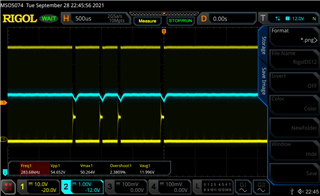Hi,
I'm using the LM5163DDAR as a DC/DC converter from an unregulated input voltage to +12VDC. When the output is
only loaded with around 150mA, I get this high ripple voltage (400mV) and I think this comes from the fact, that the LM5163 goes
into the discontinous regulator mode, since the load is too low. Am I right with this assumption?
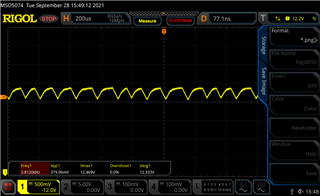
When I then increase the load to around 250mA, the voltage becomes very stable and nearly no ripple, except there
is every few ms a smaller voltage dip of around 400mA and this looks like, the LM5163 switches between continous and
disconitnous mode.
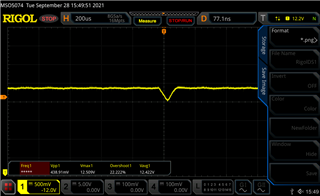

My schematics and layout looks like this, where I used webench for the design and component choice:
(C31 and C92 are not assembled at the moment)
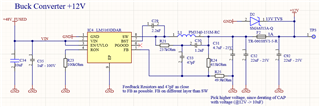
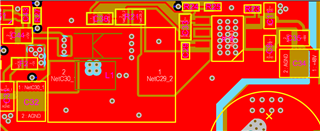
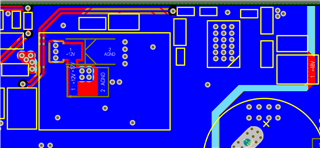
So the layout seems not to be too bad and I think either the output buffering is not enough or the load is too small. What do you think?


